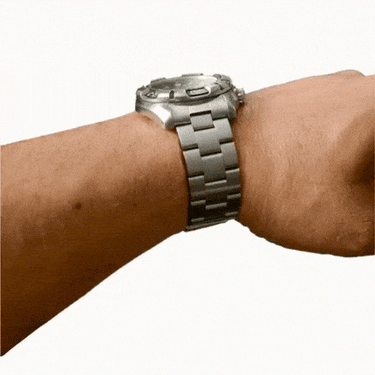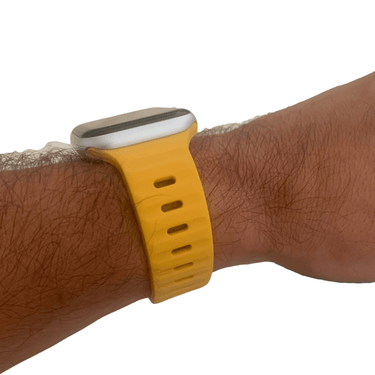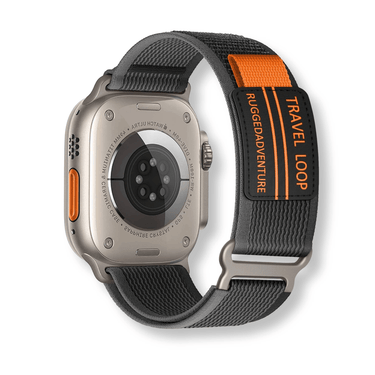As someone who’s spent years studying luxury timepieces, I’ve seen how the right accessory can transform a precision instrument into a personal statement. My journey with watchbands began when I noticed enthusiasts struggling to match their heritage-driven devices with straps that honored their craftsmanship. That’s why I created watchband.direct—to simplify this process for discerning collectors.

Certain designs demand particular attention to detail. Take those inspired by aviation history: their bold numerals and clean layouts aren’t just stylistic choices—they’re nods to functional legibility developed for wartime pilots. These features create unique challenges when selecting complementary accessories.
Understanding measurement specifications matters more than most realize. A mismatch can lead to premature wear or even affect resale value. Through trial, error, and countless customer interactions, I’ve identified patterns that balance aesthetics with mechanical harmony.
Key Takeaways
- Historical aviation design principles influence modern accessory pairings
- Precision measurements ensure both security and visual balance
- Material choices impact longevity and comfort
- Style alignment preserves investment value
- Customization reflects personal taste without compromising functionality
This resource combines technical specifications with design philosophy insights. You’ll learn how to honor a timepiece’s legacy while making it unmistakably yours—no engineering degree required.
Introduction: My Journey in the World of Watch Bands
For Thomas, founder of watchband.direct, the pursuit of perfect pairings began with a simple frustration. As a collector, he noticed how many enthusiasts struggled to find accessories that matched their timepieces’ sophistication. This gap between expectation and reality sparked a mission to redefine what premium accessories could achieve.
Founder's Background and Passion
What started as a personal quest evolved into partnerships with European artisans specializing in rare leathers and aerospace-grade metals. Thomas’s approach combines technical precision with an eye for design harmony—each material undergoes rigorous testing for flexibility, durability, and visual cohesion.
Why Quality Bands Matter
Premium materials do more than elevate aesthetics. They protect mechanisms from dust and moisture while ensuring comfortable wear. Through hundreds of trials, patterns emerged: textured silicone complements sporty chronographs, while hand-stitched calfskin enhances dress models’ elegance.
One truth became clear—the right accessory doesn’t just adorn. It transforms how you interact with precision instruments daily. This philosophy drives every decision, from sourcing to customer consultations. As Thomas often says, “Your choice should feel like a natural extension of the craftsmanship you’re wearing.”
The Legacy of IWC Pilot Watches
Aviation history courses through every IWC pilot timepiece, beginning with their 1948 Mark XI created for Royal Air Force navigators. This model established design principles still celebrated today: clean dials, luminescent markers, and cases built to withstand extreme conditions. These elements weren’t just technical achievements—they became the DNA of a functional art form.

From Cockpit to Wrist: Design Evolution
When the brand revisited its archives in 2017, the Mark XVIII emerged as a direct tribute to its predecessor. Maintaining the original’s 40mm case proportions, it proved historical accuracy could coexist with modern wearability. The evolution of aviation-inspired engineering shines in models like the Spitfire Chronograph, which houses the 69380 Calibre movement. Its 46-hour power reserve demands bands that mirror this mechanical endurance.
Signature Elements That Define Compatibility
Sword-shaped hands and bold numerals do more than ensure readability—they create visual weight that influences strap choices. A 51.5mm lug-to-lug span on the Spitfire requires precise curvature to hug wrists comfortably. Series like Big Pilot demand thicker materials to balance their larger cases, while Top Gun editions thrive with tactical nylon or textured rubber.
Thomas notes: “The right strap doesn’t just fit your wrist—it converses with the watch’s entire design narrative.” This philosophy guides recommendations, ensuring each accessory complements the legacy etched into every IWC pilot model.
IWC Schaffhausen watch band compatibility guide
Precision engineering demands equally precise accessories. Three factors determine whether a strap harmonizes with your timepiece: lug width, case profile, and curvature alignment. These measurements form the foundation of secure fitment and visual balance.

Understanding Lug Width, Case Style, and Fit
Modern aviation-inspired models typically use 20mm lug width, as seen in the 41mm Pilot Chronograph and Spitfire series. This dimension remains constant across many designs, but case thickness varies significantly—from 14.5mm to 15.3mm in these examples. Thinner profiles require streamlined materials to prevent bulkiness.
Straight-end straps adapt to most case shapes, while curved options need specific contours. Thomas notes: "A 51.5mm lug-to-lug span requires exact curvature to avoid wrist gaps." Quality bands often taper from 20mm at the lugs to 18mm at the buckle, mirroring original specifications for seamless integration.
Reference numbers like IW387901 unlock precise compatibility data. Using calipers or a specialized measuring tool ensures accuracy—even 1mm deviations risk damaging spring bars or compromising security. These technical nuances guide recommendations that enhance both comfort and design cohesion.
Premium Materials and Style Trends in Watch Bands
The material of a strap transforms both its function and aesthetic. At watchband.direct, every option undergoes rigorous selection to balance luxury with practicality, ensuring each piece meets Thomas’ exacting standards for craftsmanship.
Comparing Leather, Silicone, Steel, and Nylon
Leather straps remain unmatched in elegance, especially when crafted from supple European hides. These age beautifully, developing unique patinas that complement sophisticated designs. For contemporary versatility, textured silicone options excel in water resistance while maintaining sleek profiles ideal for active use.
Steel mesh bracelets demand precise engineering to mirror case finishes seamlessly. Brushed 316L stainless steel components ensure durability without compromising comfort. Meanwhile, nylon alternatives like Cordura fiber sailcloth with leather backing offer military-inspired resilience perfect for aviation heritage enthusiasts.
- Italian Alcantara: Blends sporty texture with formal adaptability
- Canvas options: Lightweight cotton-viscose blends for vintage appeal
- Color strategy: Navy and black provide versatility; cognac tones add warmth
Every strap in the collection features hardware that echoes original specifications. As Thomas often advises: “Your choice should enhance both daily comfort and long-term value.” This philosophy ensures materials meet technical demands while elevating personal style.
Expert Tips for Pairing Straps with Your IWC Watch
The right strap transforms a timepiece from mere accessory to a personal statement. Thomas, founder of watchband.direct, emphasizes subtlety: “Your choice should frame the dial like a museum display—presenting its beauty without distraction.” This approach balances technical precision with stylistic intuition.
Personal Insights and Recommendations
For models like the Pilot Chronograph 41mm with blue dials, Thomas suggests neutral tones first. Natural leather in classic brown harmonizes with aviation-inspired designs while maintaining versatility. Dark brown Alcantara merges sporty resilience with boardroom-ready sophistication—ideal for professionals seeking all-day comfort.
Tonal matching creates cohesion for formal events. A navy strap paired with a matching face elevates business attire without overwhelming the outfit. “It’s about creating visual rhythm,” Thomas notes. “The eye should flow seamlessly from case to strap.”
Practical Fit and Lifestyle Alignment
Measure your wrist circumference before selecting materials. Active users benefit from silicone’s flexibility, while office environments demand refined leather. Seasonal swaps keep your look fresh: breathable nylon shines in summer, while supple calfskin adds warmth during colder months.
Always match the strap’s purpose to your activities. Weekend adventures pair well with rugged canvas, while dress occasions call for minimalist profiles. As Thomas advises: “Your strap should adapt to life’s chapters—not dictate them.”
Exploring watchband.direct Collections for IWC Watches
Navigating the world of luxury accessories becomes effortless with thoughtfully curated solutions. Our selection bridges heritage craftsmanship with modern versatility, offering options that honor precision engineering while aligning with personal aesthetics.
Precision-Tested Pairings
The collection features over 200 designs tailored for aviation-inspired timepieces. From supple Italian leather to aerospace-grade rubber, each material undergoes rigorous testing across iconic series like the Mark XVIII and Pilot’s Chronograph. Thomas personally verifies every contour and clasp alignment, ensuring seamless integration with intricate case profiles.
While the catalog accommodates popular smart devices, the focus remains on elevating mechanical masterpieces. Textured silicone complements sporty models, while hand-finished calfskin enhances dressier silhouettes. Affordable pricing—without compromising quality—makes experimenting with styles accessible.
Discover straps that mirror your lifestyle’s rhythm. Whether you prioritize boardroom refinement or weekend adventures, the right choice awaits. As Thomas often reminds clients: “Your timepiece deserves accessories worthy of its legacy.”
FAQ
How do I determine the correct lug width for my IWC Pilot Chronograph?
Measure the distance between the lugs (the protruding edges on either side of the case) using a caliper or ruler. Most Pilot Chronograph models, like the Ref. IW3777, feature a 21mm lug width, though vintage pieces may vary. Check your watch’s reference number for precision.
Can I use a leather strap on a water-resistant IWC model?
While leather adds sophistication, opt for rubber or stainless steel bracelets for water-resistant models like the Aquatimer. Leather can degrade with prolonged moisture exposure, but treated options with protective finishes offer limited compatibility for occasional use.
Are aftermarket bands compatible with IWC’s proprietary quick-change systems?
Many third-party straps now integrate with IWC’s EasX-CHANGE mechanism. Verify that the band includes compatible spring bars or adapters. Brands like watchband.direct design options specifically for seamless attachment to modern collections.
What strap thickness works best for larger IWC cases like the Big Pilot?
Thicker straps (4-5mm) balance the 46mm Big Pilot case, ensuring proportional aesthetics. Look for reinforced edges and structured padding to maintain comfort without compromising the watch’s bold, tool-inspired design language.
How do I match a strap color to my IWC dial and finish?
Pair warm-toned dials (cream, brown) with earthy leathers like cognac or tobacco. Cooler dials (blue, black) align with gray NATO straps or brushed steel. For two-tone cases, select bands with matching accent tones to unify the look.
Do titanium IWC models require specific strap materials?
Titanium’s lightweight durability pairs well with textured rubber or canvas straps, which emphasize its utilitarian roots. Avoid overly glossy finishes—matte or bead-blasted hardware complements the metal’s understated sheen.
Can I customize straps for vintage IWC references like the Mark XI?
Yes—vintage models often use 18mm or 20mm lug widths. Opt for slim, tapered straps in distressed leather to honor their heritage. Ensure the buckle matches the era (e.g., signed “IWC” riveted buckles for authenticity).


























